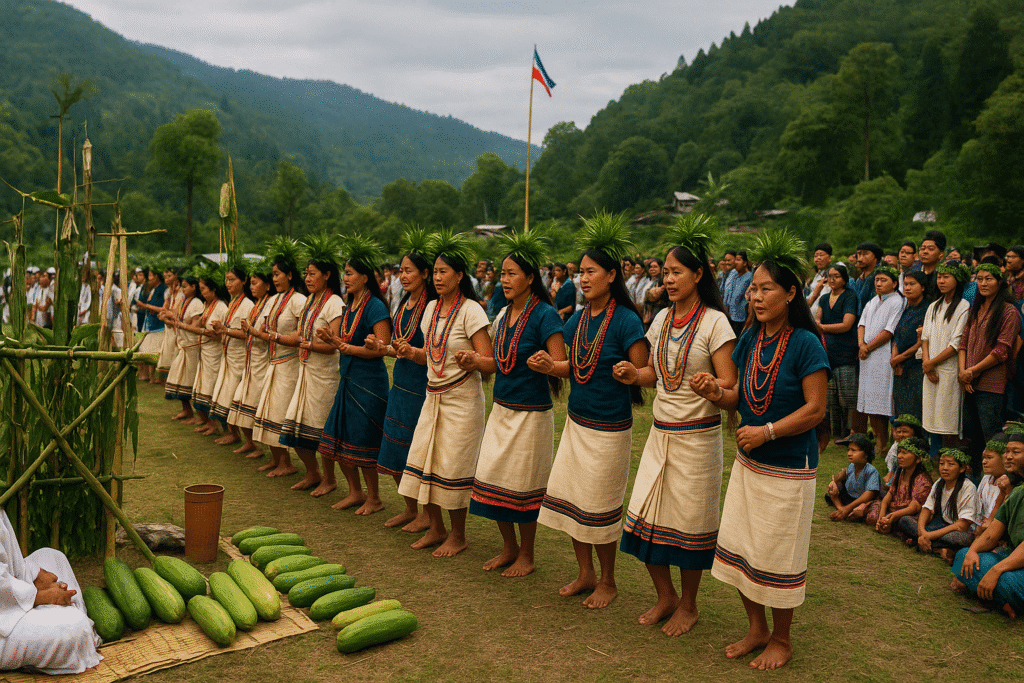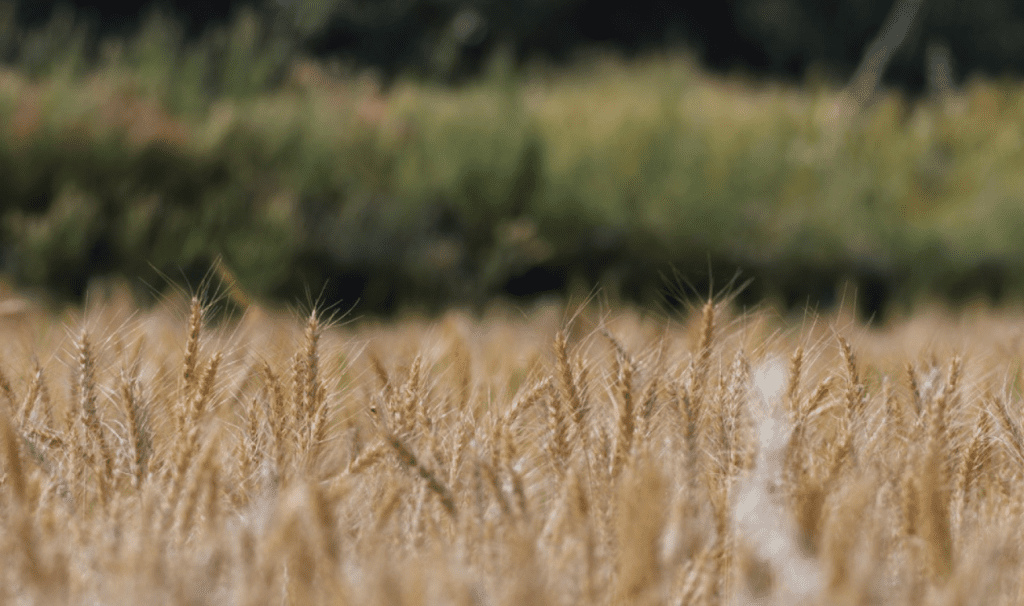Introduction
The Dree Festival, a vibrant agrarian celebration, is the heartbeat of the Apatani community in Arunachal Pradesh’s Ziro Valley. Observed annually from July 4 to 7, with the main festivities on July 5, this festival is a profound expression of gratitude for a bountiful harvest and a prayer for prosperity. Rooted in the Apatani’s sustainable farming traditions, Dree blends ancient rituals, communal feasts, and cultural performances, showcasing their deep connection to nature and heritage. This article explores the festival’s historical significance, unique traditions, and evolving role in fostering unity and cultural pride, offering a fresh perspective on its enduring legacy.
Historical and Cultural Roots of Dree
Origins in Apatani Mythology
According to Apatani folklore, the Dree Festival traces its origins to the dawn of agriculture in the mythical land of Iipyo Supuñ. Humans transitioned from foraging to cultivation under the guidance of Anii Donii, the first settler, and Abba Liibo, the first cultivator. Facing challenges like pest infestations and natural calamities, the Apatani developed rituals to appease deities for protection and prosperity. These rituals evolved into Dree, a festival dedicated to ensuring a pest-free harvest and community well-being.
The Birth of a Unified Celebration
Historically, Dree was observed separately in Apatani villages on varying dates. In 1967, inspired by centralized festivals like Assam’s Bihu, Apatani students led by Shri Lod Kojee proposed a unified celebration. The first centralized Dree was held at Siilañ Ditiñ, later shifting to Nenchalya near Old Ziro, fixing July 5–7 as the official dates. This transformation strengthened community bonds and elevated Dree as the Apatani’s most significant cultural event.
Spiritual and Social Significance
Honoring the Deities of Prosperity
Dree is a spiritual ode to five key deities: Tamu (protection from pests), Metii (warding off diseases), Meder (purifying fields), Mepiñ (ensuring bountiful harvests), and Danyi (fertility and prosperity). Rituals, led by selected priests, involve offerings of fowls, eggs, and mithun (a semi-domesticated bovine), symbolizing gratitude and supplication. The inclusion of Danyi worship, introduced in 1967 with a mithun sacrifice, underscores the festival’s evolving spiritual depth.
Fostering Unity and Identity
Beyond its agricultural roots, Dree is a celebration of Apatani identity. The festival unites villages across Ziro Valley, fostering camaraderie through shared rituals, feasts, and performances. It also serves as a platform for cultural preservation, with traditional practices like the Daminda dance reinforcing the community’s heritage. As Chief Minister Pema Khandu noted in 2020, Dree’s vibrant celebrations strengthen Arunachal Pradesh’s cultural mosaic, promoting love and peace.
Rituals and Traditions of Dree
Sacred Rituals and Sacrifices
Dree begins on July 4 with village-level rituals, where priests erect bamboo altars and offer apong (rice beer) to deities. Sacrifices, including chickens and mithun, are performed, with priests examining the animals’ livers to gauge the rituals’ success. The sacred Ranii Akhii, a revered object, is displayed but remains untouchable to commoners due to its spiritual potency. These rituals, steeped in tradition, ensure divine blessings for crops and health.
The Daminda Dance and Community Feasts
The Daminda dance, a rhythmic folk performance, marks the festival’s start and end, with women and children singing songs that narrate Apatani legends and love sagas. Community feasts feature local delicacies like yatang (rice pudding cooked in bamboo) and apong, shared among villagers and guests. Cucumbers, symbolizing fertility, are distributed as prasad, reflecting the festival’s agrarian ethos. These traditions create a joyous, inclusive atmosphere.
Sports and Cultural Competitions
Dree’s festive spirit extends to sports and cultural events, including football, volleyball, and traditional games like iisañ (high jump) and giibii (wrestling). Literary contests, such as essay writing and painting, promote Apatani language and history. Fashion shows and beauty pageants showcase traditional attire, blending heritage with modernity. These activities engage youth and visitors, making Dree a dynamic cultural spectacle.
Dree Festival in Ziro and Beyond
Celebrations in Ziro Valley
The heart of Dree lies in Ziro Valley, particularly at Nenchalya, where the central festival ground hosts flag-hoisting, cultural performances, and feasts. Villages like Hija, Hong, and Biirii also hold local events, drawing crowds clad in vibrant traditional attire. The festival’s accessibility, with Ziro 110 km from Itanagar and homestays offering immersive experiences, makes it a cultural tourism highlight.
Reaching Apatani Diaspora
Dree’s influence extends beyond Ziro to Apatani communities in Itanagar, Miao, and even Delhi. In Miao, the festival has been celebrated annually since 1998, with flag-hoisting and Daminda dances. These diaspora celebrations maintain cultural ties, allowing urban Apatani to reconnect with their roots. The festival’s growing visibility, amplified by social media, underscores its role in globalizing Apatani heritage.
Modern Adaptations and Challenges
Balancing Tradition and Modernity
Dree has evolved from a village ritual to a grand festival, incorporating modern elements like sports tournaments and beauty pageants. However, Minister Gabriel D. Wangsu emphasized in 2024 that modernity should not dilute Apatani traditions. Efforts to maintain authenticity, such as standardized rituals and cultural competitions, ensure Dree remains a true reflection of Apatani values.
Environmental and Social Concerns
The festival faces challenges, including environmental concerns raised by leaders like MLA Shomlung Mossang, who advocate against deforestation and poaching to honor Dree’s nature-centric ethos. Social issues, such as the risk of politicizing the festival, have prompted calls for unity, as noted by former Minister Tage Taki. Addressing these challenges is crucial to preserving Dree’s sanctity.
Dree’s Broader Impact
Promoting Sustainable Agriculture
The Apatani’s unique paddy-cum-fish cultivation, celebrated during Dree, is a model of sustainability, recognized by UNESCO as a potential World Heritage Site. The festival highlights these eco-friendly practices, inspiring global interest in sustainable farming. By distributing cucumbers and offering apong, Dree reinforces the sacredness of agriculture, aligning with modern environmental goals.
Boosting Cultural Tourism
Dree’s vibrant rituals and picturesque Ziro Valley backdrop make it a magnet for tourists. Homestays, cultural tours, and festivals like the Ziro Music Festival complement Dree, positioning Ziro as Arunachal Pradesh’s tourism hub. Promoting Dree internationally could enhance local economies while showcasing Apatani culture, as suggested by MLA Toko Tatung.
Lessons from Dree for Today
Gratitude and Community
Dree’s emphasis on gratitude for nature’s bounty offers a timeless lesson in appreciating resources. Its communal feasts and shared rituals foster a sense of belonging, encouraging modern societies to prioritize collective well-being over individualism. The festival’s inclusive spirit, welcoming locals and visitors, exemplifies harmony in diversity.
Resilience and Cultural Pride
The Apatani’s commitment to preserving Dree amidst modernization reflects resilience. By adapting without losing their core values, they inspire communities worldwide to balance heritage with progress. Dree’s celebration of Apatani ingenuity, as likened to “the Jews of Israel” by Minister Wangsu, underscores the power of cultural pride in shaping identity.
Conclusion
The Dree Festival is a radiant tapestry of faith, agriculture, and Apatani heritage, weaving together rituals, dances, and feasts in Ziro Valley’s serene embrace. From its mythical origins to its modern vibrancy, Dree embodies gratitude, unity, and sustainability, resonating far beyond Arunachal Pradesh. As the Apatani navigate the crossroads of tradition and modernity, Dree stands as a testament to their resilience and cultural richness. Let us celebrate this festival as a call to honor nature, strengthen communities, and preserve the legacies that light our path forward.



